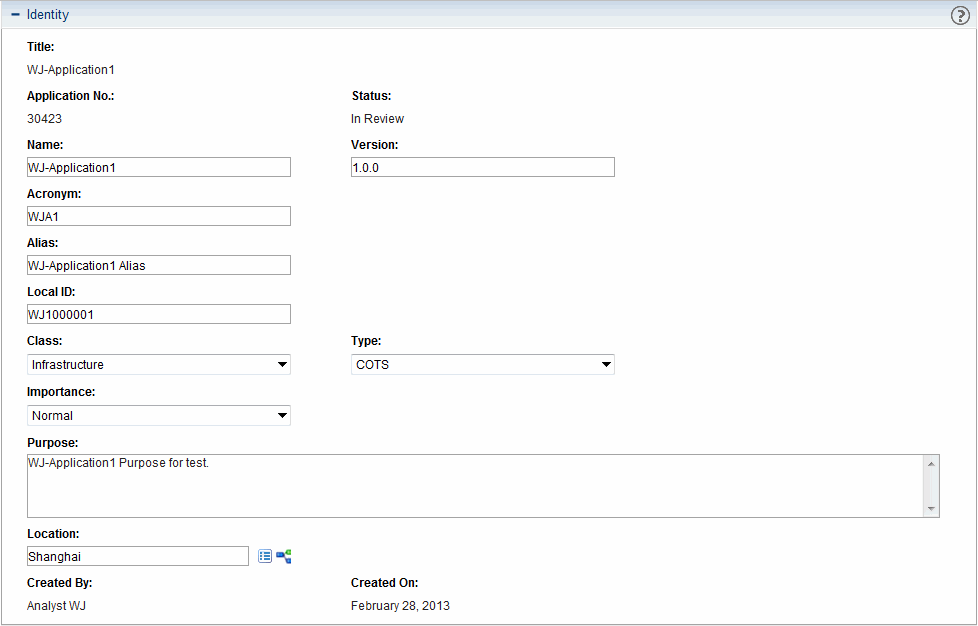Identity
In the Identity section, enter the fundamental information that identifies the application.
Note: The Identity section is a subsection of the header section.
All users can view the data in this section. Users assigned one or more of the following roles can edit the data in this section: Business Owner, Technical Owner, or Respondent (when more information is requested).
Figure A-1. Application Identity section

|
Field (*Required) |
Description |
|---|---|
|
Title |
Read-only. The Title is automatically set to the application Name. |
|
Application No. |
Read-only. A unique numeric identifier of the application. |
|
Status |
Read-only. The status of the application.
|
|
*Name |
A name given to the application that distinguishes it from other applications. The name must be unique in order to transition the application from In Review to Active status. |
|
Version |
The version information associated with the application. |
|
Acronym |
The acronym assigned to the application. Typically, this is defined by the organization most involved with the application. |
|
Alias |
An additional name assigned to the application. |
|
Local ID |
A unique identifier for the application from a client-operated inventory system, if applicable. |
|
Class |
The high-level purpose of the application.
|
|
Type |
The high-level origin of the application.
|
|
Importance |
The importance of the application to the enterprise.
|
|
Purpose |
The business or technical objective or function of the application. |
|
Location |
The physical location of the production application. |
|
Created By |
Read-only. The full name of the user who created the application entity. |
|
Created On |
Read-only. The date on which the application entity was created. |












